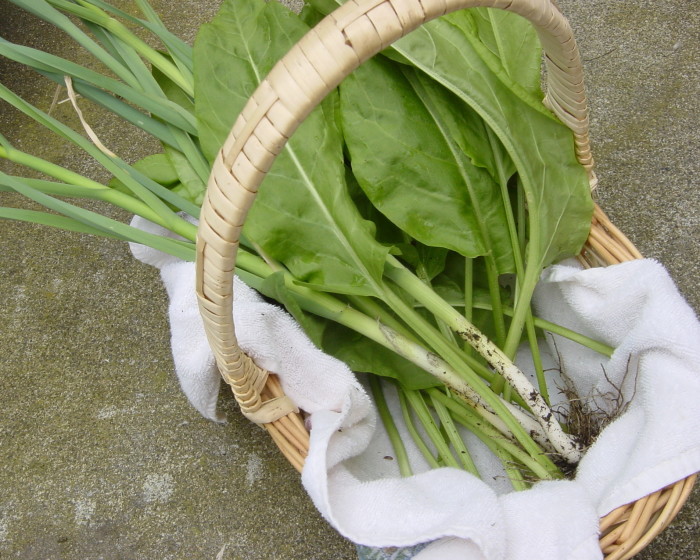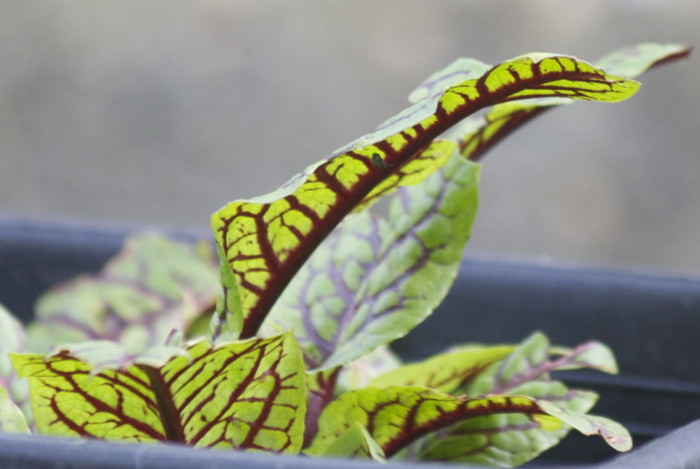What Is Sorrel And How Do I Cook With It?
Sorrel sounds romantic, like a secret mushroom, special tincture or magical word used to conjure fawns to appear by your side. However, sorrel is none of these things — it's a simple perennial herb that sprouts eagerly from the ground each spring. While it looks like any old lettuce, its tang and brightness are positively bewitching, almost as if the leafy plant were made of lemon zest. Play with this ingredient, because not only does it add a nice layer of flavor to many dishes, it's hard to mess up! A quick note before you begin: Common sorrel is not the same as Jamaican sorrel, which is a magenta-hued plant that falls into the same family as the hibiscus flower and will color your meal pink.
Where it's from
Until recently, most American chefs didn't utilize sorrel. Most of the recipes I found come from France, where the plant has been used for centuries medicinally, as well as in soups and stews. Before the French, evidence of sorrel consumption can be found in ancient Egypt, Greece and Rome, where the herb was used to add acidity to rich, heavy foods, much like we do today. In fact, the word "sorrel" comes from the Germanic word "sur" and the old French word "surele," both meaning "sour." This is exactly the profile the plant imparts and why it's been used not only in the aforementioned countries, but all over the world, including in Romania, Nigeria, Hungry, Russia, India and Vietnam.
Over the years, sorrel has grown to encompass many similar green-leafed herbs including patience, spinach dock or narrow-leaf dock, sheep sorrel, wood sorrel, belleville sorrel and most common, French or garden sorrel. While these all hail from different families and genuses, they all maintain similar characteristics, namely the texture, color and a sharp, tangy essence due to naturally occurring oxalic acid.
Aside from adding flavor, the leaves are used to aid digestion, treat liver problems and cure throat and mouth ulcers. Because sorrel provides a hefty dose of fiber, vitamins A, C and B6, iron, magnesium, potassium and calcium, it's considered a health food. Most medicinal consumption of sorrel comes in tea form, which is a nice way to end a heavy meal if you're looking for a nonalcoholic digestif.
When it's in season
Sorrel is in season in late spring until mid-summer, usually May to June. And because it grows like a weed and thrives in all sorts of conditions, you can find the plant all over the country.
What To Look For
Right now is the time to start looking for the long, emerald-hued leaves of the common sorrel plant. They are sold in bunches like any other green and either have long leaves or smaller round ones. Wild wood sorrel also can be found in the late spring and early summer months. With three heart-shaped "folded" leafs, this variety looks a lot like clover, though it also has small yellow flowers and seed pods that look like tiny okra. You can also forage for sheep sorrel, which has arrow-shaped leaves more like the classic French variety found in the market. No matter where you go to find your sorrel, get crisp leaves with an even green hue.
How to store it
Prepare sorrel soon after buying or harvesting it. The leaves will last longer washed and pressed between damp paper towels in a plastic container in the fridge, but their one- to two-week shelf life is shorter than spinach, kale or romaine. You can also dry sorrel to use as an herb, but it will lose some flavor.
How to prepare it
First, try it raw. Next, work it into pasta dishes, wilt into soups, wrap your beef in it before grilling and daintily lace the next whole fish you serve. Sorrel really can be used in any capacity. "At its peak, sorrel has a bright, tangy acidity that adds a huge depth of flavor to a dish to make it pop," says chef Ryan Taylor of the Colorado-based Kevin Taylor Restaurant Group. "I like to use sorrel in contrast to certain dishes with creamy cheeses like chèvre or a more oily fish like salmon to cut the fattiness and really brighten up a dish perfect for spring." One way Taylor works with sorrel is by combining it with yogurt to make a rich topping for his citrus-cured salmon salad (yogurt recipe below).
At Cafe Aion in Boulder, Colorado, chef Dakota Soifer whips up a stunning pesto with fresh sorrel (recipe below), a sauce he thinks the herb was meant for. "I love the lemon and acid component that comes along with the unique herby-ness of sorrel," says Soifer. "The fatty and slightly salty Marcona almonds balance the dish out really nicely." Soifer also uses the pesto as a riff on the traditional French pistou and will add a last-minute dollop to his homemade soups. In general, you can think about using sorrel in anything that calls for a bit of acid or that would benefit from a dash of tangy citrus flavor. Throw some raw leaves into a mixed-green salad, cook it down and add as a side or take the advice from these chefs and turn it into a bright accoutrement to your main dish.
Dakota Soifer's Sorrel Pesto
"This pesto goes beautifully with fish given its lemony character," says the chef.
Ingredients
Directions
Ryan Taylor's Sorrel Yogurt
Ingredients
Directions



